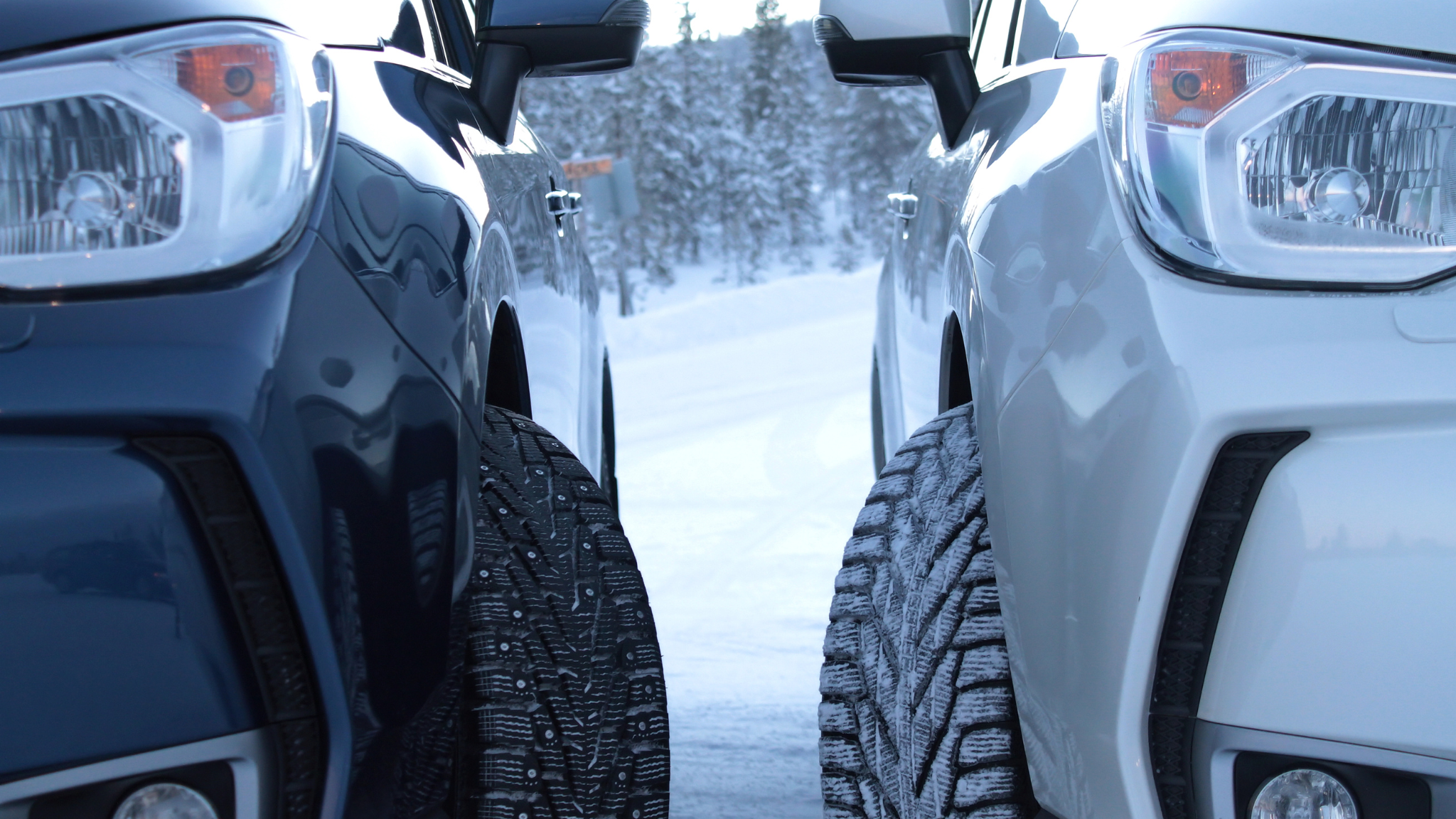When to Put on Studded Tires in Anchorage: Timing It Right Before the First Freeze
The Annual Debate
Every October, Alaskans ask the same question: When's the right time to put on studded tires?
Wait too long and you risk sliding on black ice or getting caught in the first freeze without traction. Put them on too early, though, and you'll deal with noisy rides, faster tread wear, and less-than-ideal performance on dry pavement. Striking the balance is tricky — but timing matters.
Alaska's Studded Tire Laws (Quick Reference)
In Southcentral Alaska, studded tires are legal from September 15 through May 1. The law exists for two big reasons:
Road preservation — Studs can chew up asphalt when roads are clear.
Safety — Allowing them in the snowiest months reduces crashes and improves winter drivability.
You can check the Alaska DMV's studded tire regulations for updates and region-specific details.
How Studded Tires Affect Driving Before the Freeze
Many drivers think "better safe than sorry" and install studs the moment it's legal. But before that first freeze, conditions are still mostly dry.
On dry pavement, studded tires:
Wear down faster.
Reduce fuel efficiency.
Create extra road noise.
Installed early, studs do give peace of mind if temperatures dip suddenly. For everyday drivers, that sense of readiness feels safer — but it may not always be the smartest choice for your wallet or tires.
Safety vs. Convenience: Pros and Cons of Early Installation
Pros of putting them on early:
You're prepared for sudden icy mornings.
You'll beat the rush at tire shops, which often see long waits in late October.
Cons of putting them on early:
Faster wear-and-tear on your studs.
Slightly less traction on clear, dry roads.
Louder, bumpier ride that's harder on your suspension and fuel budget.
The Anchorage Sweet Spot: Timing Recommendations
The safest bet isn't just watching the calendar — it's watching the forecast.
Keep an eye on the 7-day weather outlook. If the first freeze is on the horizon, schedule your tire change.
Factor in your commute. Do you drive over hilly routes, on dark rural roads, or in the early morning when ice is more likely? Earlier may be better.
For example, regular commuters on the Glenn Highway know conditions can turn slick overnight, long before Anchorage streets do. Getting your studs on earlier can prevent a dangerous morning surprise if that's your route.
You can wait a little longer if you primarily drive in town on plowed streets.
Alternatives and Pro Tips
Studded tires aren't your only option:
All-weather or winter tires without studs: A good choice if you don't like swapping twice a year or if you mainly stick to city streets.
Emergency kit ready: If you gamble on waiting, ensure your trunk has essentials like traction aids, jumper cables, blankets, and a flashlight.
And remember: if winter surprises you, Vulcan Towing & Recovery is here. From ditch recoveries to roadside jump starts, we've helped thousands of Anchorage drivers get back on the road safely.
Conclusion
The right time to install studded tires in Anchorage is a balance: don't rush to put them on too early, but don't risk driving on slick roads unprepared. The best strategy is to watch the forecast, assess your driving needs, and plan ahead. If you commute daily on the Glenn Highway, timing is even more critical — that stretch often ices up before city roads, making early preparation a smart move.
And if winter catches you off guard? Vulcan Towing & Recovery is just a call away — whether you need a jump start, a tow, or help getting out of a ditch.


